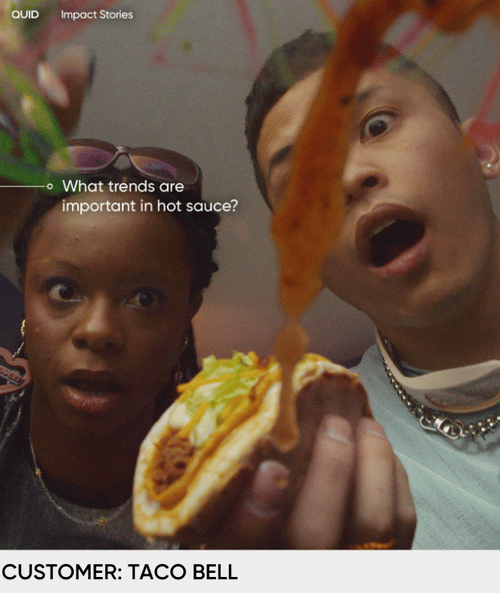Keri G

Introduction to the Blog Summary
This blog explores the significance of identifying emerging trends for brands, emphasizing how leveraging data and AI-driven insights can provide a competitive edge in various market dynamics.
Key Points Overview
Top Takeaways
Conclusion
Identifying and acting on emerging trends enables brands to stay ahead of the competition and meet evolving consumer demands. Leveraging AI-driven insights can transform how businesses navigate market changes, ensuring sustained success and innovation.
Brands that can effectively identify emerging trends have an advantage over competitors. And emerging trends can make or break a category – just ask hotels disrupted by Airbnb or the transportation industry decimated by Uber! If your brand isn’t aggressively pursuing emerging trends, take a seat and follow along – because you’re missing out on exceptional opportunities. We’ll share how to do it and why you must.
In this post, we’ll cover some emerging trends to keep in mind now, including:
Before we dive in, here are a few stats that should help focus your thinking:

More specifically, you are likely to use a trend analysis to dig into macro themes or big ideas shaping specific narratives in a conversation. The goal being an actionable understanding of how topics evolve over time and become a trend, along with educated insights into the future of those ideas – the emerging trends.
In Germany, for example, there are emerging trends around the adoption of emerging trends – it’s all very meta. And very relevant.
A challenge Germany faces in the push for increased tech adoption powered by next generation AI is finding staff with the expertise to derive meaningful insight from it all. More specifically, companies are faced with remaining flexible and leveling up their tech stacks to keep pace with a workforce they’re trying to attract: “Adapting to the current trends and interests of the new developers and their preferred tech stacks will be key for companies in 2022; and if a company resists these trends, they will likely have more difficulty finding new talent.”
German companies need to adapt to emerging trends in technology, that’s for sure. And not only to retain top tech workers, but also to stay on top of their category as it shifts. A well-built trend analysis will boil down a broad topic to uncover emerging trends by identifying and exploring four key questions:
To gain a comprehensive understanding of emerging trends, it’s essential to capture the universe of articles relevant to your query. And “universe” is an apt description as you set out on this search! “Relevant” is the key word here though, as you’ll want to be sure your massive capture is something worth analyzing and ultimately actionable.
Visualizing our search results in Quid Monitor, our first step after performing our targeted Boolean-powered search, helps familiarize ourselves with the network map. This will give an overview of the central narratives in the conversation.
And as you move through each cluster, renaming as necessary based on the key takeaways from the articles presented within, themes begin to appear.
Once this is done, you’ll have a bird’s eye view of the major narratives – along with an understanding of the common themes and concepts that will help identify emerging trends later in the analysis.
From here, let’s zoom in on the small, unconnected clusters on the periphery of the network map. These clusters are unconnected to the main narrative as they’ve yet to gain traction within the mainstream media.
However diminutive, these clusters shouldn’t be overlooked as they often contain technological breakthroughs, research investments, rumors, news of product launches, and relevant partnerships. Simply put, this is the space where emerging trends live. But it’s not the only place to find them, as some hide in plain sight in the main clusters. More on that in a bit.
These hidden gems are representative of the niche narrative composed of evolving topics that can hint at future developments. And it’s helpful to isolate these emerging conversations and create a saved view as we’ve done below:
We can group similar clusters using Quid’s tag functionality and switch to a timeline view colored by tags to see how our emerging trends have evolved over time.
As you can see, a thoughtful trend analysis puts some serious competitive intelligence at your fingertips. The power of visualized data helps you spot emerging trends and how they’ve waxed and waned over time. Not only that, but it’s also market intelligence that your decision-makers can act on with confidence.
In the spirit of keeping a watchful eye on emerging trends, let’s take a quick peek at three that should be on your radar already.
Hiccups in the global supply chain have compounded over the lifetime of the pandemic culminating in clogged ports, shipping container shortages, production slowdowns from lockdowns, and a ravaged trucking industry. Unfortunately, it’ll probably get worse before it gets better due to the scale of the problems. Here’s a current viewpoint of top-tier media articles on the subject using US and UK sources from the past year:
At this point, supply strains are a global headache, and it sounds kind of funny to call it a ‘trend.’ However, that’s precisely what it is. Though this subject has the world’s attention, there are many moving parts within it that can impact your brand. That’s why digging into trending conversations is worth the effort.
Ideally, you want to watch these discussions as they emerge and track their movement over time. However, it’s never too late to begin monitoring a trend you stumble upon to help guide your brand strategy. If we pull this narrative into a timeline view, we can see it really picking up steam in September as the media began warning consumers to do their holiday shopping early.
If your brand waits until things hit a fever pitch to start strategizing, you’ll have a lot more competition trying to get the goods, services, and contracts needed to keep things running smoothly. The smart brands spend their resources tracking emerging trends, so they have resolutions in place before everyone else realizes what’s going on.
That’s what we find when we zoom into the digital supply chain management cluster. Back in January of 2021, while many brands were still tallying 2020’s holiday sales revenue, German automaker BMW was busy solving a problem facing many brands.

What did BMW do? They partnered with Honeywell to streamline their manufacturing process using quantum computing. Specifically, they were seeking to maximize efficiency in sourcing components – a cumbersome task for automakers in the best of times.
That’s the power of finding and exploring emerging trends. It enables you to pull the trigger on solutions so you can have your partnerships in place before there’s a mad rush. Undoubtedly, BMW saved itself a lot of frustration by revamping its supply protocols early in 2021.
There are still a lot of questions and unmet needs in this conversational space, and savvy brands will continue looking for opportunities to provide answers. A detailed exploration of peripheral topics reveals countless ideas to consider.
Another particularly impactful trend revolves around Ethical Purchasing.
If you didn’t know that Gen Z and Millennials care an awful lot about ethical concerns – you haven’t been listening online. Not only is this a primary concern of both segments, they increasingly flex their retail purchasing power when a brand or product doesn’t reflect their values.
It’s a growing trend to put brands under the microscope for a top-down assessment of their ethical practices from sourcing to sustainability. Top brands in the luxury market are paying attention, and so should you. Here’s a look at the top ten ethical fashion topic clusters over the past year showing a hornet’s nest of media attention:
Not only do consumers care about ethical fashion, but they’re also taking the time to research brands to make sure they’re the real deal. Brands must have sustainability on their radar because consumers will shop elsewhere in a heartbeat. This is evident in this conversation from the volume of articles dedicated to the exploitive nature of fast fashion.
It doesn’t take long for newcomers to come along that cater to emerging trends. And these brands tend to be disruptive to the status quo. Take the French company Marine Serre for example. Debuting their collection in 2016, Marine Serre takes eco-responsible fashion seriously, making their collections from 90% recycled materials. As they put it, their fashion offerings are a “hybrid mixture of classic French couture shapes, driven by authentic Ecofuturist beliefs to produce new garments based on end-of-life materials.” And judging from their social media traction, they’ve got their ethically-minded audience dialed in.
Now, let’s take a look at another trend making the rounds.
Everybody was scrambling to get on Zoom in the beginning as the coronavirus swept the globe. Schools closed their doors, and before we knew it, everyone was trying to figure out how to do work and school remotely.
But just because the topic isn’t on the forefront of the media as it was in the early days doesn’t mean the story has played out. This conversation has continued to simmer like beef stew throughout the pandemic, with new challenges bubbling up with every variant.
At this stage, we’ve witnessed classrooms and offices attempting to open back up on the backside of major spikes in cases. Whether through political or economic pressures, it’s an attempt to resume some semblance of normalcy. However, pandemic fatigue is causing burnout and apathy among workers and students, particularly amidst the highly contagious Omicron variant. Brands cannot afford to lose their focus here.
Whether your brand is bringing products/services into this space or watching it from a human resources perspective, climbing into these discussions will keep your strategies aligned to pressing needs. Additionally, we’re now far enough that studies are coming out – backed by sufficient data – demonstrating how pandemic pressures affect workforces and student populations over the long term.
This type of intel is invaluable in marketing your goods and services and maintaining a vibrant labor force while everyone else scrambles to attract workers.
This is one of the best ways to capture emerging trends. Brands or organizations connected to this space will want to dig further to inform their R&D and marketing angles. And you can do this for any topic or category under the sun to maximize your situational awareness.
Overall, spotting emerging trends doesn’t have to feel like finding needles in a haystack. Visualized data powered by the next-generation artificial intelligence (AI) in Quid provides the actionable intel you need. The ability to sort through massive quantities of structured and unstructured data to find relevant, accurate intel is a game-changer, for sure.
We help top brands spot emerging trends every day – enabling them to steer the narrative in their respective markets and discover white space ahead of competitors. And you can too. Be sure to reach out for a demo, and we’ll show you how.